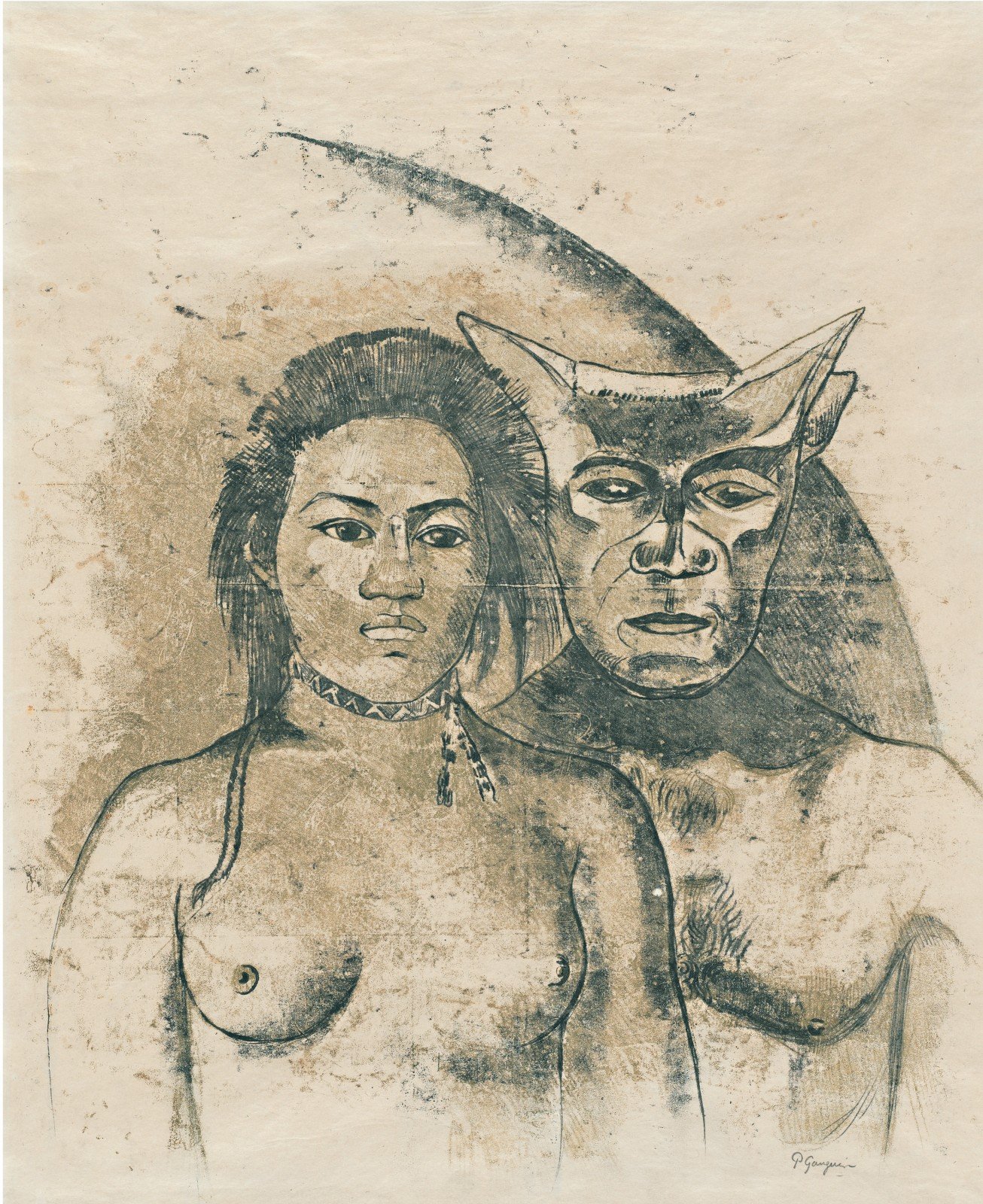A particular affinity between Gauguin and Munch inspired by the show “Metamorphoses” currently at the MoMA
- Edvard Munch, Sjalusi, 1895. Oil on canvas, 67 x 100 cm. Rasmus Meyer Collection, Bergen.
- Paul Gauguin, Contes barbares (Barbarian Tales), 1902. Oil on canvas, 131,5 x 90,5 cm, © Museum Folkwang, Essen Photo: Museum Folkwang.
- Paul Gauguin (French, 1848–1903). Tahitian Woman with Evil Spirit (recto). c. 1900. Recto: oil transfer drawing; verso: graphite and colored pencil, sheet 25 9/16 x 18 1/8″ (65 x 46 cm). The Museum of Modern Art, New York. Gift of Abby Aldrich Rockefeller (by exchange), Vincent d’Aquila and Harry Soviak Bequest Fund (by exchange), and acquired through the generosity of The Abby Aldrich Rockefeller Endowment for Prints, Sue and Edgar Wachenheim III, Mary M. Spencer, and Stephen Dull, 2014.
Driven by the title of the exhibition that the MoMA is dedicating to Paul Gauguin’s experimental works on paper, Metamorphoses (until 8 June), we have bumped into a peculiar and complex affinity we would like to examine in depth. It is between Gauguin’s “Contes Barbares” (1902) and “Jealousy”, a sophisticated canvas Edvard Munch painted in 1985.
These extraordinary paintings had been physically close to each other only once in history. It was 1979, in occasion of the show at the Royal Academy of Arts in London titled “Post-Impressionism”, a label invented by Roger Fry in 1910 that this show questioned in relation with the cross-currents in European painting. But of course “Contes barbares” and “Jealousy” share much more than the mere membership to a certain art tendency, or a very similar composition. These two artworks seem to represent the same human dark matter.
“Jealousy” is the result of the three-cornered relationship of Munch, the Norwegian student Dagny Juell, and writer Stanislaw Przybyszewski. When he was in 1893 in Berlin, Munch introduced Dagny into the circle of bohemian intellectuals who gathered at a beer-hall called the Schwarze Ferkel (Black Piglet). Her magnetic appeal and belief in a cult of free love caused intense sexual rivalries within the group, in particular among Much, August Strindberg and Przybyszewski. The girl is presented as a voluptuous Eve while picking the fruit of sin, a fruit painted red as her opened robe. But the picture’s focus is on the writer, who is staring at the beholder with an incomprehensible expression on his face, perhaps trying to figure out in his mind the scene that is going on behind him.
“Contes barbares” was painted just seven years later, in 1902, when Gauguin was living in the Marquesas islands. In this case, the couple is made of two girls, while the single character is a man that squats behind them with the right hand supporting his chin and a devilish bare foot that comes out from his dress. He is Meyer Isaac de Haan, a Dutch artist with whom Gauguin worked in 1889, in Brittany. De Haan, who was born in a successful Jewish family and was deeply involved with the arcane and the occult, is thus opposed to the two creatures of Nature, acting as typical Gauguin contrast: innocence versus knowledge.
At the moment we can’t say if Gauguin saw the “Jealousy” or not. However, after having been exhibited at Blomqvist’s in Oslo in 1895, Munch’s painting was mentioned in an article published by Thadée Natanson on Revue Blance, claimed that Munch neglected pictorial concerns “for the purely human” (Revue Blance, 1895). The following year the same magazine published also a wide article by Strindberg focused on some of Munch’s paintings, including “Jealousy”. In 1895 Gauguin moved to the Marquesas Islands. Maybe he took with him some readings for the travel…
September 22, 2014



